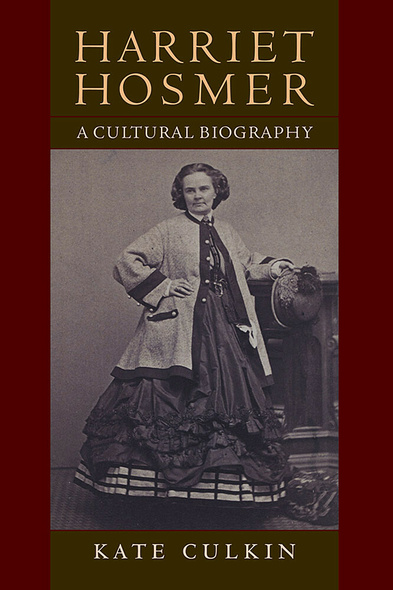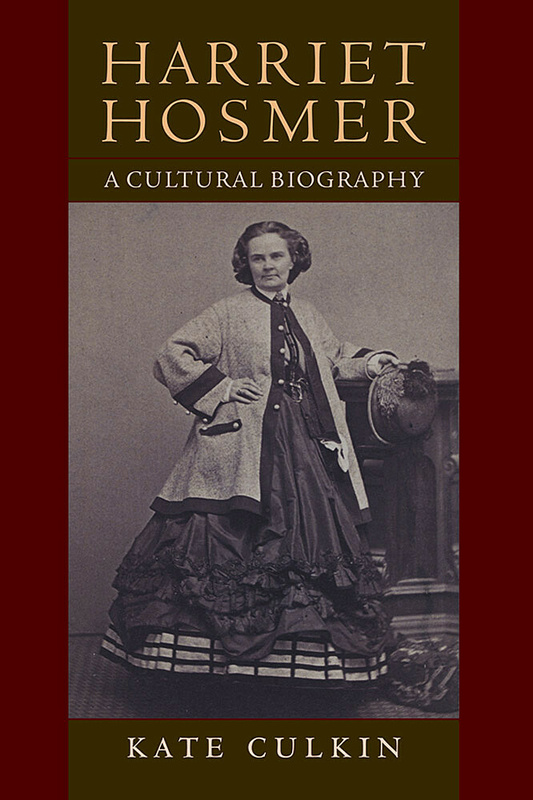Harriet Hosmer (1830–1908) was celebrated as one of the country's most respected artists, credited with opening the field of sculpture to women and cited as a model of female ability and American refinement. In this biographical study, Kate Culkin explores Hosmer's life and work and places her in the context of a notable group of expatriate writers and artists who gathered in Rome in the mid-nineteenth century.
In 1852 Hosmer moved from Boston to Rome, where she shared a house with actress Charlotte Cushman and soon formed close friendships with such prominent expatriates as Robert and Elizabeth Barrett Browning and fellow sculptors John Gibson, Emma Stebbins, and William Wetmore Story. References to Hosmer or characters inspired by her appear in the work of Nathaniel Hawthorne, Louisa May Alcott, and Kate Field among others. Culkin argues that Hosmer's success was made possible by her extensive network of supporters, including her famous friends, boosters of American gentility, and women's rights advocates. This unlikely coalition, along with her talent, ambition, and careful maintenance of her public profile, ultimately brought her great acclaim. Culkin also addresses Hosmer's critique of women's position in nineteenth-century culture through her sculpture, women's rights advocates' use of high art to promote their cause, the role Hosmer's relationships with women played in her life and success, and the complex position a female artist occupied within a country increasingly interested in proving its gentility.
In 1852 Hosmer moved from Boston to Rome, where she shared a house with actress Charlotte Cushman and soon formed close friendships with such prominent expatriates as Robert and Elizabeth Barrett Browning and fellow sculptors John Gibson, Emma Stebbins, and William Wetmore Story. References to Hosmer or characters inspired by her appear in the work of Nathaniel Hawthorne, Louisa May Alcott, and Kate Field among others. Culkin argues that Hosmer's success was made possible by her extensive network of supporters, including her famous friends, boosters of American gentility, and women's rights advocates. This unlikely coalition, along with her talent, ambition, and careful maintenance of her public profile, ultimately brought her great acclaim. Culkin also addresses Hosmer's critique of women's position in nineteenth-century culture through her sculpture, women's rights advocates' use of high art to promote their cause, the role Hosmer's relationships with women played in her life and success, and the complex position a female artist occupied within a country increasingly interested in proving its gentility.
This is the best account of Harriet Hosmer's work that I have read, and is most illuminating about her place and importance in American culture.'—Martha Vicinus, author of Intimate Friends: Women Who Loved Women, 1778-1928
'In this fluid and lucid biography, historian Culkin aims to establish Hosmer as 'a woman whose biography opens a window into her time.' . . . This will be of great interest to art historians of the period and scholars of 19th-century American women's history.'—Publishers Weekly
'Culkin's descriptions and discussions . . . are among the high points of this study: she writes with insight and eloquence about the works themselves as objects of aesthetic significance and places them within the moving currents of Hosmer's life.'—Women's Review of Books
'Culkin concentrates on Hosmer's cultural milieu, her 'ladies bountiful' and lovers (rich patrons, widows and daughters of tycoons) in Italy, Boston, Paris and London. ... Culkin has added a highly readable, well annotated study to the increasing pantheon of creative lesbians supported by networks of friends and lovers.'—Lambda Literary
'Kate Culkin's study of Harriet Hosmer, her life, her work, and her times truly restores the place of Harriet Hosmer as a significant woman sculptor in the history of American art.'—Historical Journal of Massachusetts
Kate Culkin is assistant professor of history at Bronx Community College. Find Kate Culkin on Facebook: https://www.facebook.com/harriethosmer





